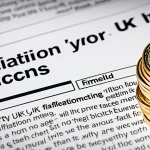Overview of UK Pet Microchipping Laws
The UK pet microchipping laws have been designed to ensure the safety and traceability of domestic animals, primarily focusing on dogs. Under current microchipping regulations, it is mandatory for all dogs over the age of eight weeks to be microchipped. Pet owner responsibilities include not only the initial implantation but also registering the microchip with an approved database. This ensures that should the pet go missing, the owner’s information is readily accessible.
Pet owners are legally required to keep this information updated. This means that if there are changes in ownership or contact details, these must be reflected in the database record. Failure to comply with these requirements could lead to enforcement actions.
In parallel : How Can Pet Owners Ensure the Wellbeing of Their Pets in the UK?
Local authorities play a crucial role in monitoring compliance. They conduct spot checks and investigate reports of unchipped or unregistered dogs. This is part of a broader initiative to reduce the number of lost pets and strays and improve animal welfare standards across the country. Compliance with these laws helps provide peace of mind for pet owners and enhances the chance of safely recovering a lost pet.
Implications of Non-Compliance
Non-compliance with UK pet microchipping laws carries significant consequences that pet owners should be keenly aware of. Failure to adhere to the microchipping regulations often results in microchipping fines that can be administered by local authorities. These fines act as a deterrent and encourage responsible pet ownership, emphasizing the necessity for compliance.
Also read : How Can You Ensure Your Pet’s Safety at Home?
Pet owners neglecting to microchip their pets are subject not only to fines but also potential legal penalties. Such penalties extend beyond financial costs, potentially including further enforcement actions which can complicate the pet ownership experience. The presence of unchipped pets poses a hazard not just for the pet but also impacts broader community safety efforts.
Enforcement actions have been taken in various instances where pet owners did not fulfill their legal obligations. For example, in some cases, repeat offenders faced escalated penalties. The enforcement of these laws underpins a commitment to pet safety, ensuring that the welfare of pets is prioritized. It underscores the importance of maintaining an updated microchip registration to avoid possible repercussions.
Importance of Microchipping for Pet Safety
Pet safety is greatly enhanced through the benefits of microchipping, which vastly improve the odds of recovering a lost pet. Unlike traditional identification methods like collars or tags that can be easily removed or lost, microchips provide a permanent solution. Each chip contains a unique identification number that is registered in a database, making it an invaluable tool for ensuring pets are reunited with their owners.
Success stories abound, where pet owners have shared testimonials of being joyously reunited with their beloved companions thanks to microchipping. These anecdotes underscore the effectiveness of microchipping in real-life scenarios by highlighting its critical role in pet owner experiences.
Additionally, comparing microchipping to other methods of pet identification, such as physical tags, emphasises its reliability and longevity. Microchips eliminate the risk of losing or damaging identification, ensuring that pets always carry vital identification with them.
In safeguarding pet safety, microchipping acts as a layer of reassurance for owners and a key component in animal welfare initiatives. This exemplifies its broad importance, not just for lost pet recovery, but as a pillar of responsible pet ownership.
How to Microchip Your Pet
One of the key components to ensuring pet safety through microchipping is understanding the microchipping process itself. This involves selecting a qualified professional, knowing the procedure’s steps, and post-procedure care.
Choosing a Qualified Professional
It is crucial to have the microchip implantation performed by a licensed veterinarian or a trained professional. This ensures the procedure is done safely and efficiently, minimizing stress for the pet. A qualified practitioner will adhere to best practices, providing assurances on the proper handling of the microchip and correct implantation.
Understanding the Microchipping Process
The process of microchipping is relatively quick and simple. During the procedure, a small microchip about the size of a grain of rice is implanted under the pet’s skin, typically between the shoulder blades. This is done using a needle, and the procedure is generally tolerated well by most pets, similar to a routine vaccination. The microchip itself contains a unique identification number that is later registered in a national database.
Aftercare and Monitoring
After the microchip implantation, it is essential for pet owners to monitor the insertion site for any signs of infection or discomfort. Updating microchip information with any changes in contact details or ownership ensures that if a pet becomes lost, recovery efforts are streamlined. Furthermore, regular checks at veterinary visits can confirm that the microchip is functioning correctly, offering peace of mind and continual protection for your beloved companion.
Considerations for Pet Owners
Pet ownership is a rewarding journey, but it comes with significant responsibilities, especially concerning pet identification. Ensuring your pet’s microchip information is accurate and up-to-date is a crucial aspect of pet ownership responsibilities. This involves initial microchip registration, as well as regular updates whenever there is a change in contact details or ownership. These updates are essential for maintaining an effective link between you and your furry friend.
When changing your address or phone number, make it a priority to update these details in the microchip database. Failing to do so can impede the recovery of your pet if lost. This task might seem minor but is indispensable for seamless pet recovery. Most microchip databases allow for easy updates online or via a phone call, making the process straightforward and quick.
While microchipping is a robust form of pet identification, it’s wise to consider complementary methods. Traditional identification, like collars with tags, can provide immediate info to a finder. Despite their temporary nature, such methods can act as a first point of contact. Together with microchipping, they form a comprehensive approach to ensuring your pet’s safety and prompt return should they stray from home.







